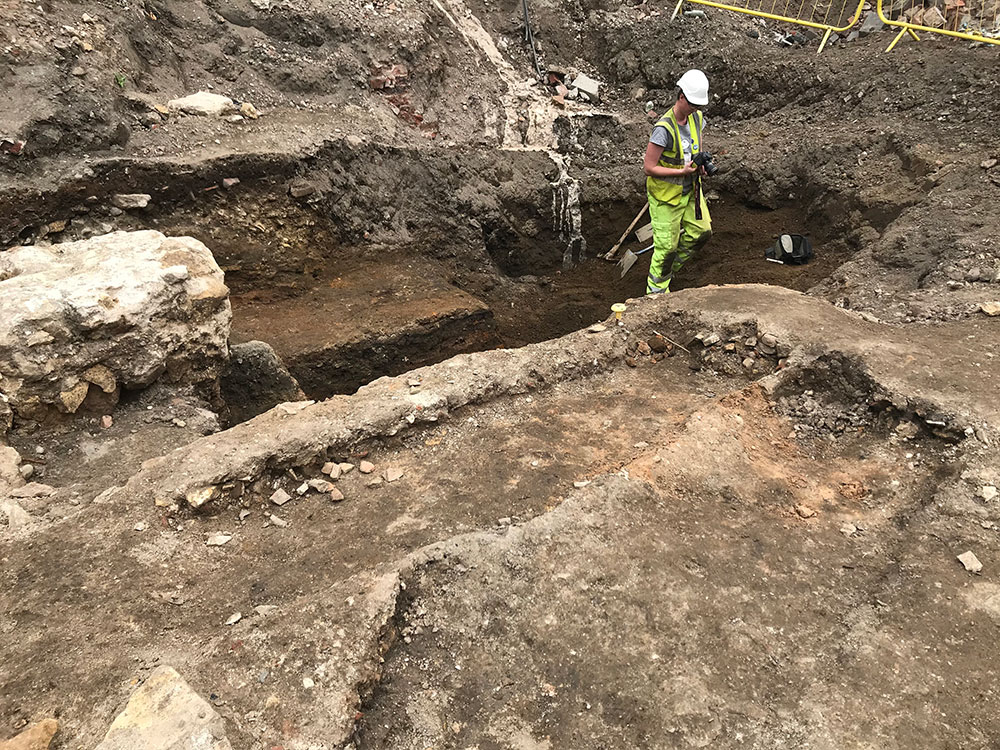Historic human remains have been discovered at the Guildhall site in York city centre, as it was revealed the structure was built on a graveyard.
The human remains – thought to be from six bodies – were discovered in an area on the north west side of the site behind overlooked by the House of Trembling Madness and The Graduate.
It is thought they could be the bodies of monks in the burial ground of a former friary on the site dating back to the 15th or 16th century.
But the discovery was only made in the last few weeks and the remains will be sent for analysis.
Roman pottery, a hairpin and tesserae – tiles used to create mosaics – have also been found.
Skull and a ribcage

Construction workers discovered the top of a skull, a ribcage and vertebrae while demolishing a wall on site.
A team from York Archaeological Trust were called in – and say the bodies may have been disturbed in the past by grave robbers looking for valuables, or by years of works on the site.
Analysis may be able to determine more details about the bodies – including their age and sex.
The burial sites were found facing east to west in Christian fashion.
Other discoveries include a well-preserved Roman hairpin, a stylus or toothpick, pottery and some medieval coins.
Built on a graveyard

Tom Coates, project supervisor for the Trust, said: “We were seeing human remains in the form of a graveyard, along possible lines of a friary wall.
“There were indications of disarticulated human remains scattered across the whole development.
“Those deposits have moved about over time which has also revealed disarticulated human remains.”
Tom added:
There was evidence to suggest a possible graveyard here somewhere but we were previously on the understanding that it had been completely [cut off] by development in the 19th and 20th century.
It was six bodies that we uncovered. They are not as neat as you would expect them to be, they’ve been heavily disturbed.
It looked like back in the day when they were doing demolition with horse and cart and there were many people on the ground churning up the soil as they went along, unfortunately it’s all been subject to later disturbance.
They have discovered earlier stages of the friary, including kitchen floors.
Lockdown helped

Cllr Nigel Ayre said work on the £20m Guildhall project – which features office space, a cafe, riverside restaurant and public spaces – has continued through the crisis.
“When we first started talking about the Guildhall project there was a lot of talk about the history of the building and it’s built up over time from the original 15th century guild hall through to the later Victorian buildings,” he said.
“We are looking here at a 14th or 15th century friary with its burial plot and it’s been really interesting to open that up and see what the city used to look like 600 or 700 years ago.

“It’s been a challenging project from the word go, we had floods at the start of the year which raised a lot of issues for us and it’s a site that was always going to be particularly difficult.
“But with the buildings around being closed during lockdown, that’s made it a lot easier to do a lot of the demolition work which would have been much more problematic for some of the businesses nearby – so it’s probably one of the few projects that’s been able to progress at pace during the lockdown period.”
